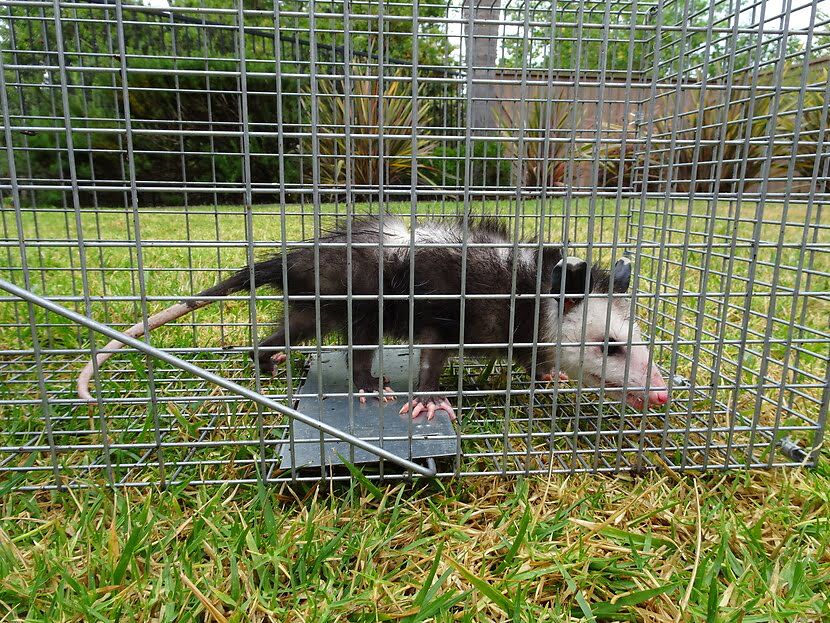
Little spaces like the one under your porch are a prime target for wild critters, particular skunks, raccoons and opossums, because they are easily accessed and seldom checked. When was the last time you had a look under there, let alone a tidy-up under there? There are lots of little spots that are not often looked at around the home, and those are the kinds of places that wild critters are looking for. We know that these animals are attracted by food, but it is the shelter and safety/security that keeps them hanging around.
Knowing which animal is hanging around is key to then being able to get rid of it, and there are plenty of signs that you can keep your eyes open for. Waste material (urine and feces) is, obviously, a very big giveaway, and that can even tell you what animal it came from. We don't recommend that you get too close because feces from any animal is going to be a carrier of disease, but if you can see the poop, you might just be able to make out what created it.
Opossums and raccoons are two animals that can live quite happily in the same area together, and they can both inhabit the same residential or commercial properties, too. It is often the case that one animal will attract another, dead animals bringing in rats and insects, and then predators of those rats and insects coming right in after them.
Poop left behind by raccoons and opossums, and, in some cases, even skunks, will look very similar, and they all look pretty much like dog poop. Smaller bits might even appear cat-poop-like. If this poop is in your garden, you'd probably jump to the conclusion that your pet left it there, picking it up and throwing it in the trash as you usually would. Although it is wise to get rid of any feces in your back yard, you should do so carefully, and with protection (gloves, etc.) when you're dealing with the waste material of a wild animal. With opossums alone, tularaemia, leptospirosis, salmonellosis, and many more diseases are a very real and very big threat.
You can tell the difference between pet feces and wild critter feces in some cases, because it will be in ‘weird' places. Your attic, for example, wouldn't be a common place for your cat or dog to poop. Nor would the space underneath the porch. If this is a first-time offence for your pet, it might not be an offence that they have committed at all.
Different wild animals will leave slightly different waste material, too, although we definitely do not recommend paying too much attention to it. You can rule out raccoon poop under the porch if the stuff you're looking at is scattered. Raccoons like to use areas to do their business, called latrines. They work in the same ways as human bathrooms do, really, making sure that all waste material is confined to one place, not spreading disease in the places where these creatures live, eat, and sleep.
Opossums are much messier than raccoons are, and they do not use these latrine areas. If you find scattered and un-centralised toilet waste belonging to a wild animal, it will be an opossum, skunk or similar, not a raccoon.
If you are close enough to see the colour of the droppings, a yellowy-white tinge would suggest a type of mold that only grows in the feces of opossums, not raccoons, and you can once again use this information to better tailor your animal removal quest.
Go back to the opossumpestcontrol.com home page.
Copyright 2021 - opossumpestcontrol.com
Nationwide Opossum Pest Control Services